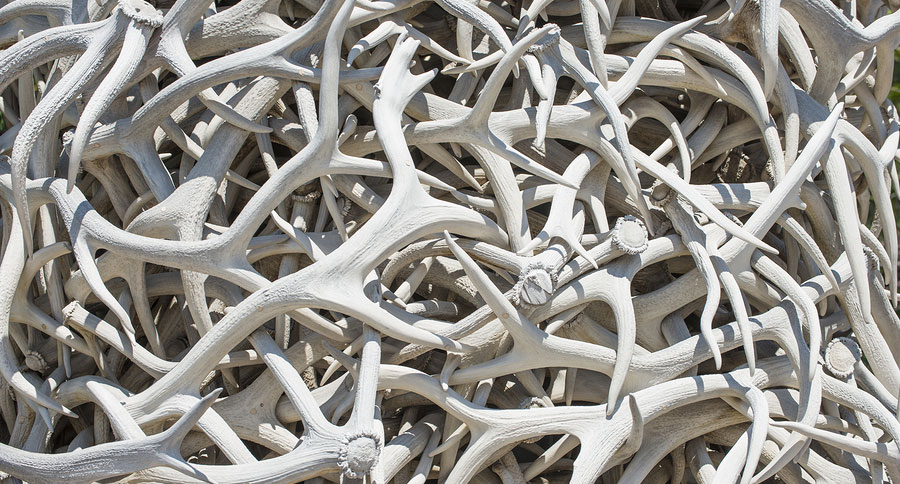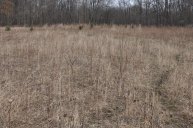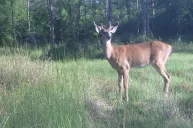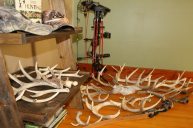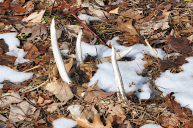It's time to take a look and the forever-growing pastime among outdoorsmen after hunting season.
Shed hunting is the fastest-growing trend in hunting, but few shed hunters ever think past the activity to ask themselves the story behind those antlers.
Biologists aren't 100-percent clear what purpose the annual shedding of antlers fills, but they have a few theories.
Think about these things the next time you start finding sheds.
Why Bucks Shed
One theory as to why deer shed antlers is to repair the antlers on a yearly basis. If a buck damages or breaks his antlers one year, he doesn't have to live the remainder of his life that way; losing his ability to establish his dominance within the herd. This theory seems the most logical.
However, another theory is that shedding and re-growing allows the antlers to better stay in tune with the rest of the buck's growing body, and more specifically, the cyclical cycle a buck endures annually.
How Bucks Shed
The biological change that causes shedding is the direct opposite change that creates the hardening of the antlers. While in velvet, the photoperiod of the day reaches a certain point causing a buck's testosterone to increase, antlers to harden, and the velvet to shed.
In the winter, once a buck's testosterone lowers, a thin layer known as an abscission layer will begin to develop between the skull and the base of the antler. This layer weakens the connection and will eventually cause the antlers to fall off.
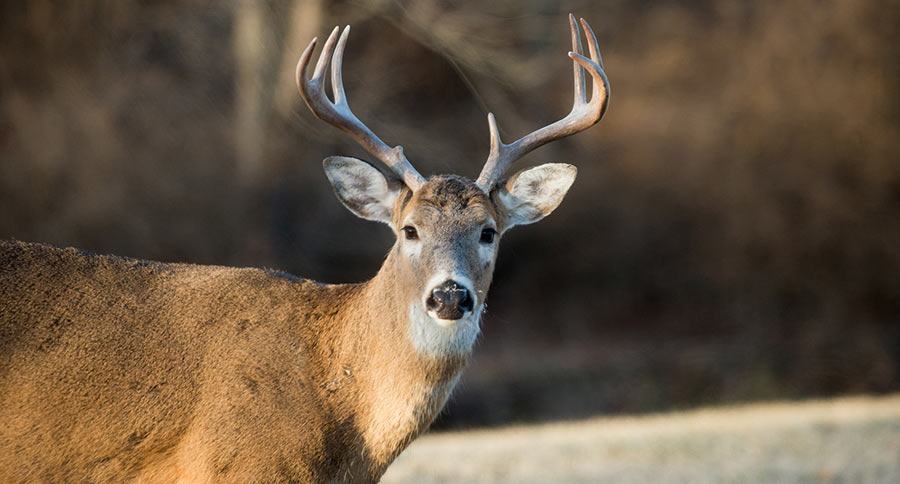
The timing of this drop has some common tendencies, but there is no way of knowing for sure. One common occurrence is that larger bucks lose their antlers first. This is most likely caused from experience in knowing when the rut is really over, causing their testosterone to ramp down quicker.
There have been some studies that suggest quality of habitat, particularly late season food quality, has an impact on when bucks drop their antlers. They concluded that healthier bucks hold their antlers longer. There have also been studies to suggest bucks will shed their antlers around the same general time year after year.
Why Even Look?
Growing up, neither I nor anyone I hunted with ever went out in search of sheds. Sure, we would find some lying around while conducting deer drives the following fall, but we never specifically went out in search of sheds.
Today shed hunting has become a sport in and of itself due three factors. First, it's a great scouting tool. Second, the increase in demand for antler-related décor has created a market for those antlers.
Finally, some people just love the challenge of getting out there, in a time where most hunters are at home with cabin fever, and enjoying the serenity of the woods this time of year. I personally shed hunt as a form of postseason scouting. I will already be out looking for useful sign to increase my odds the following year. This is the time I use to search for sheds in hopes to narrow down a buck's bedding area or travel route.
Where to Look
- Late Season Food - Deer can't afford to spend large amounts of energy in the late season causing them to bed close to their food sources. If you know where bucks are feeding and know they probably aren't bedding far away, you have located where a bucks is spending most of his day.
- Late Season Cover - Deer also need protection for the elements to help conserve energy. Check spruce and pine thickets, bucks will be using these to protect themselves from winds and precipitation.
- Water - A whitetail's winter food source is dominated by woody species that have a tendency to lack water. If the weather is extremely cold in your area, causing the majority of your water sources to freeze, having a limited water source will attract bucks into a small area.
- Crossings - As you're scouting trails to help determine how deer are moving throughout your property, pay close attention to any areas that bucks have to possibly jump or duck under something. This jolt or low lying branch might be that final straw to dislodge that antler.
How to Look
When I'm in the woods shed hunting, my major priority is locating and deciphering sign from the previous year. Therefore, I'm constantly finding and following random deer trails throughout areas I didn't want to disturb during the season and finding sheds is a cherry on top.
If you're specifically shed hunting, I recommend the grid search. Mentally mark off a section of the property you think has a high potential for sheds and start walking in a grid. Make sure the section is small enough you don't feel rushed and take your time visually scanning all the ground in a 50-foot area.
I hope these shed hunting tips helped you find sheds and kill time during the off-season at the same time!
NEXT: 'MOUNTAIN LION' THAT SPOOKED TEXAS HIKERS WAS ACTUALLY SOMETHING EVEN MORE RIDICULOUS
WATCH
